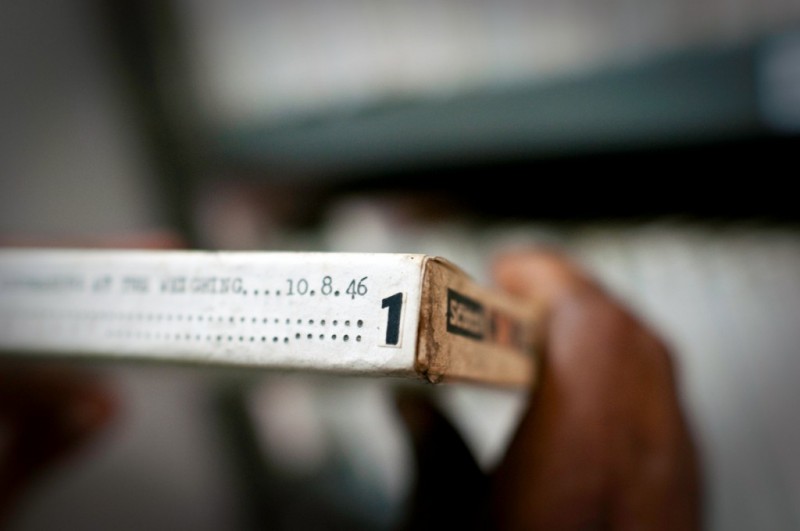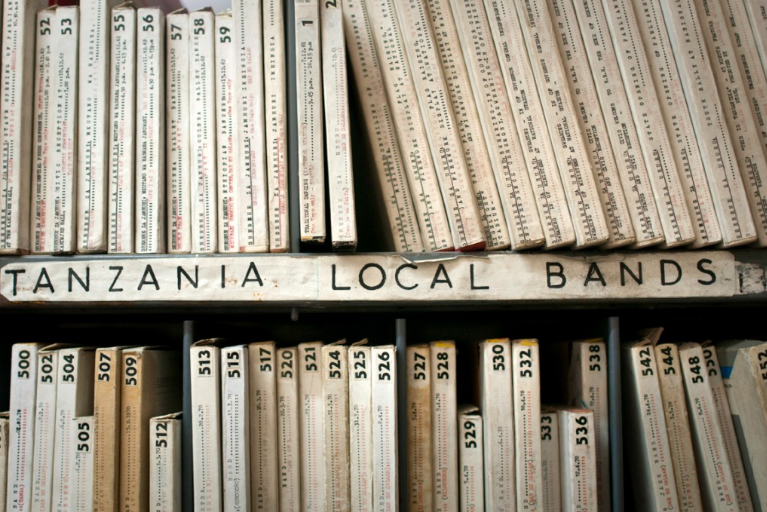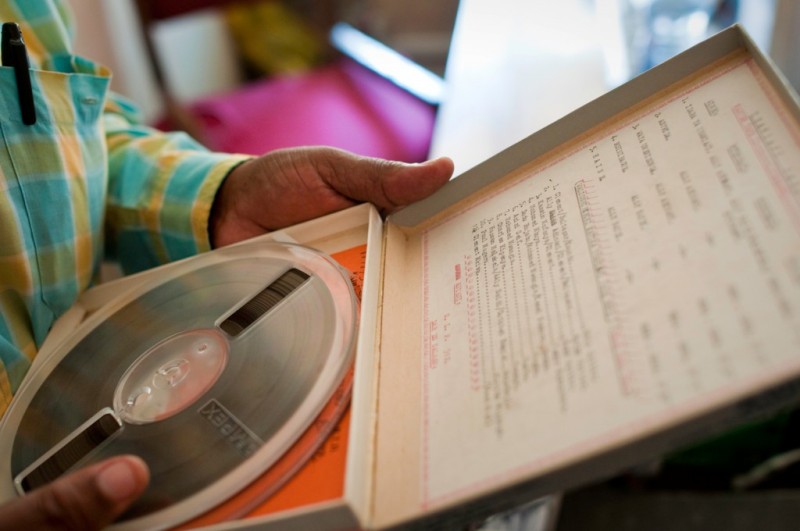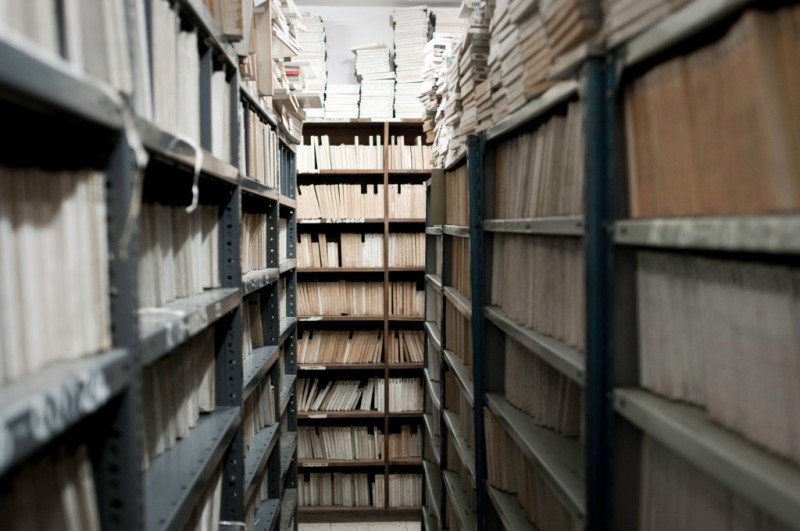A few years ago we learned about a group in Tanzania who, like Singing Wells, is working to preserve traditional music, but for them the act of preservation is quite literal – the Tanzania Heritage Project is scrambling to digitise reams of reel-to-reel tape recorded between the 1960s and 1980s, which has been literally rotting for decades in the moulding archives of the Tanzanian Broadcasting Corporation.

Some has already deteriorated to the point where it’s unplayable, and the rest will suffer the same fate if nothing is done. The music they’re trying to save, called muziki wa dansi (“dance music” in Swahili), is not just catchy and danceable (although it certainly is); it’s also an essential part of the country’s cultural history.
When Tanzanian independence leader Julius Nyerere took over from the British in 1961, he worked hard to foster a local musical style that the new country could call its own. We spoke to Rebecca Corey, who started the project in 2010 and still coordinates it today. “They started phasing out all foreign music from the local stations” in the 1960s, she told us. “So to fill up that airtime they would send out recording safaris to various rural villages to record these ngoma dances and drumming sessions.”

This traditional village music was combined by state-funded bands with the Cuban-flavored rhumba coming in from the Congo. The resulting mélange, she said, “is characterised by these high guitar riffs, and then a lot of African polyrhythmic drumming in the background, and even featuring horn sections.”
True to its name, muziki wa dansi is music that practically forces spectators out of their chairs. When you hear this music in concert, says Rebecca, everyone will be dancing. But the music itself wasn’t always meant to be pure entertainment. True to his socialist roots, Nyerere wanted his songs to carry messages as well. Most of these bands were set up by the government, who employed the musicians and paid for all their instruments. Some of their songs are actually public service announcements set to a catchy tune, conveying information about how to take care of children or how best to help one another build a new, independent Tanzania. “It was all about love, all about unity, all about coming together and building a new nation”, said Benson Rukantabula, who also works on the project.

But as with any state-sponsored propaganda, some messages were politically acceptable, while others were not. Also in the archives are other historical gems, including speeches (there’s one the Aga Khan delivered in 1946, and reportedly another by Che Guevara), as well as the original tapes of the traditional ngoma music recorded out in the field. They’re well-organised with all the tracks labeled, along with the tribe and area in which the music originated. There’s ethnographic information about the tribes and the history of the bands, and some tracks even include the recommended dance steps that go with them.
There are still bands performing in the muziki wa dansi style, which enjoyed something of a resurgence with the 50th anniversary of independence. One is King Kiki, who has been playing rhumba-inspired music in the Tanzanian capital, Dar-es-Salaam, for over 50 years. But he admits that this music has fallen out of fashion in recent years, with most Tanzanian youth preferring Western imports. “My music is no longer on the radio. That’s why people don’t know about it anymore”, he laments. “There needs to be more of an effort to teach young people about the music of the past, so they will like it.”

With an estimated 250,000 hours of material on reel-to-reel tapes and vinyl records, some of it in an advanced state of decay, the task of the Tanzania Heritage Project is certainly a daunting one. But Benson is convinced that once it’s made available, his fellow Tanzanians will rediscover their love for muziki wa dansi. Nor is it just about Tanzania; Benson also has a bigger point to prove about East African music. “Many people think that the only place where you can find really good African music is in West Africa”, he says. “We can say to people, hey, it’s not all about Kilimanjaro and the national parks. We also have cool music.”
We wish them all the best, and hope one day to take a trip to Tanzania for a few recording sessions of our own! Check out the Tanzania Heritage Project here. Here too are a few YouTube videos of their catchy music:
